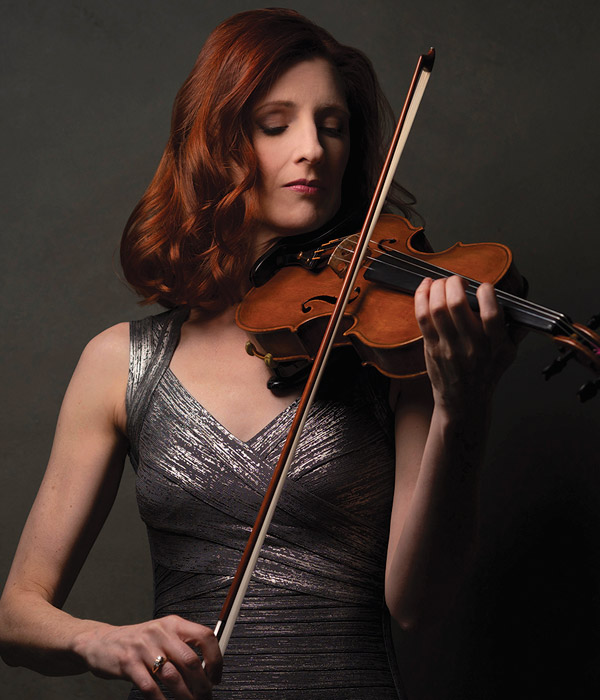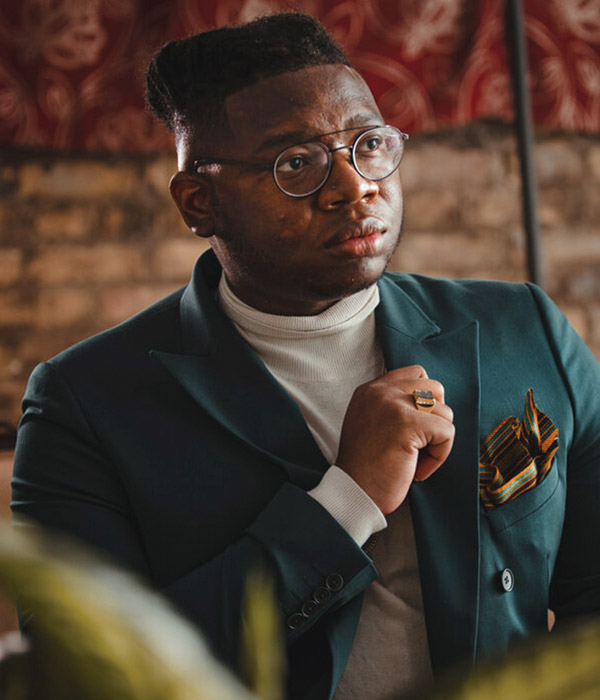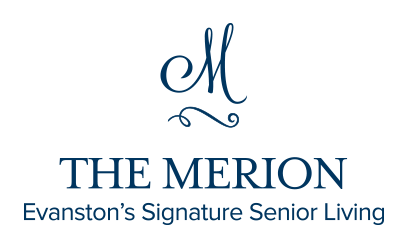You are here
April 2024 Concert
An intriguing concert of music in film, hosted by WFMT’s LaRob K. Rafael. The concert centerpiece is George S. Clinton’s stunning The Rose of Sonora, narrated by Rafael with violin soloist Holly Mulcahy and the Allegrezza singers. Composer Clinton explains, ‘Rose is first and foremost a violin concerto... conceived in the style of an epic Western film score, in five movements (scenes), each preceded by narrative explication. It’s an outlaw cowgirl movie in sound.' Contrasting the excitement of this piece is the melancholy of Samuel Barber’s Adagio for Strings and the sweetness of Ennio Morricone’s Cinema Paradiso. Finally, the boisterous An American in Paris by George Gershwin, creates a program that runs the gamut of emotions.
Program
Musical Insights Free Pre-Concert Preview the Friday before this concert.
Learn How to Attend!
- Williams
- The Cowboys Overture
- Morricone
- Cinema Paradiso
- Clinton
- The Rose of Sonora
Holly Mulcahy, violin
Allegrezza singers
LaRob K. Rafael, Host and Narrator
- Barber
- Adagio for Strings
- Gershwin
- An American in Paris
Pick-Staiger Concert Hall
50 Arts Circle Drive, Evanston
See map.
TICKETS
Buy TicketsAll tickets are assigned seating.
At this time, masks, vaccinations and testing are no longer required to attend ESO concerts or events. As always, we ask that if you are sick, please stay home to prevent the spread of illness. (read more detail).
Advance Sales
$35 Adult, $30 Seniors, $5.00 Full-Time Student
At the Door Sales
$39 Adult, $35 Seniors, $5.00 Full-Time Student
Children Free
Children 12 and younger are admitted absolutely FREE, but must have an assigned seat.
Please call 847.864.8804 or email tickets@evanstonsymphony.org for all orders with children’s tickets.
Soloist
Holly Mulcahy, violin

Host
LaRob K. Rafael, Narrator

Program Notes
The Cowboys Overture
John Williams (1932–) 10 minutes (1972/1986)
The Cowboys was a film directed by the very talented Mark Rydel and featured John Wayne, probably Hollywood's quintessential cowboy.
The movie required a vigorous musical score to accompany virtuoso horseback riding and calf roping, and when my friend Andre Previn heard fragments of the score, he suggested that a concert overture lay hidden within the film's music. Several years slipped by, and each time I saw the indefatigable Previn he would ask, "Have you made an overture of Cowboys yet?"
He kept this up until 1980, when I finally worked out the piece and played it at a Boston Pops concert. Both the orchestra and the audience seemed to enjoy the music to such an extent that it has been part of our repertoire ever since.
I am especially delighted that this edition has finally been made available, and I hope that interested people will find genuine pleasure in this music.
— Program note by John Williams.
Cinema Paradiso (Main Theme and Love Theme)
Ennio Morricone (1928–2020) 6 minutes (1988)
No Italian composer has ever had a larger audience than Ennio Morricone, whose music for nearly 400 European and American movies and television shows and hundreds of arrangements for such leading pop vocalists as Mario Lanza, Paul Anka and Björk has been heard around the world. Morricone scored his first film in 1961 (Luciano Salce’s Il Federale), and established his reputation as a movie composer three years later with his innovative and dramatic music for director Sergio Leone’s A Fistful of Dollars. Among Morricone’s most memorable scores are those for Cinema Paradiso (1989 Academy Award winner for Best Foreign Film), The Untouchables, The Good, the Bad and the Ugly, Days of Heaven, Bulworth, Hamlet, The Stendhal Syndrome, The Escort, In the Line of Fire, La Cage aux Folles and Once Upon a Time in America. Morricone received his first Oscar nomination for the Days of Heaven (1978), his second for The Mission (1986, which a Variety poll of forty top film composers selected as the greatest film score of all time), and further nominations for The Untouchables (1987), Bugsy (1991), Malèna (2000), and The Hateful Eight (2016). He won his only competitive Academy Award for The Hateful Eight, a decade after receiving the Academy’s Honorary Award “for his magnificent and multifaceted contributions to the art of film music,” one of only three composers so honored since the award’s inception in 1928. (Alex North and Lalo Shifrin were the others). In addition to his two Oscars, Morricone received three Grammy Awards (as well as induction of The Good, the Bad and the Ugly into the Grammy Hall of Fame), three Golden Globes, six British Academy Awards, two European Film Awards, Golden Lion Honorary Award, and Sweden’s Polar Music Prize in 2010 for his collaboration with Icelandic pop star Björk. Though most of his creative work was dedicated to the cinema, Morricone, who studied trumpet and composition at the St. Cecilia Conservatory in Rome, also composed nearly a hundred concert works, most of them after the mid-1980s.
Director Giuseppe Tornatore’s Cinema Paradiso, 1989 Academy Award winner for Best Foreign Film, is the loving portrayal of a successful Italian movie producer (Jacques Perrin) who returns to his hometown in Sicily to reminisce about his early life and loves and his special friend, a projectionist (Philippe Noiret) at the local movie theater who instilled in the boy his love of the cinema.
— Program note ©2024 Dr. Richard E. Rodda.
The Rose of Sonora (A Concerto in 5 Scenes)
George S. Clinton (1947–) 30 minutes (2018)
I’ve secretly loved Western film music for years, but finally outed myself on Facebook in 2017 when I posted, “If there was an epic western soundtrack style violin concerto, I’d be all over it.” Posting that made me feel like I was sharing a side of me I wasn’t sure I wanted people to know. But I did it anyway and figured nobody would care or respond. The response surprised me!
The comments started rolling in as people were agreeing, commenting, and echoing my thoughts! I felt maybe there was something to this concept. I contacted Hollywood film composer and friend, George S. Clinton, to see if he had any interest in writing a Western style violin concerto.
George and I spoke by phone several times and we discussed and planned what kind of concerto this should be. We shared our observations of various concertos and concert pieces, and we talked about classical music and today’s audiences and concert atmospheres.
When George shared his idea of a story arc about a wild west outlaw woman compiled from real outlaw women, I knew we had something unique and very much needed. Not only was it a story that captivates, it gave me what was missing from just about every Western movie I’ve watched: A strong female lead.
— Program note by Holly Mulcahy.
The Rose of Sonora is first and foremost a violin concerto. It is composed in five scenes (movements) for solo violin, symphony orchestra, and male chorus, but, per Holly’s request, in the style of an epic Western film score. One of the features of the solo violin part is the merging of traditional fiddle technique with classic violin technique, giving the main character, Rose, her voice.
As a film composer I am used to composing to a story so after researching the lives of outlaw women of the Old West, I created my own story and heroine, “The Rose of Sonora.” Each of the five scenes tells part of her story.
I believe that for most of us, listening to music can evoke images in our minds. I decided to use that as a way of presenting the concerto. Rather than a passive listening experience, it will be an interactive one. Prior to each scene being performed, a description of what is happening in that scene will be projected on a screen above the orchestra. Inspired by the scene descriptions and the music they are hearing, by the end of the concerto, each member of the audience will have imagined his or her own mental movie of The Rose of Sonora.
Scene 1. Escape — 1893, in what was known at that time as the Territory of Arizona. The full moon has turned the Sonoran desert an eerie blue. Rose rides quietly into town and makes her way to the jail house. She quickly subdues the guard and frees Jed from his cell. Together at last, they ride off into the night, the ill-gotten gold stashed in her saddle bags.
Scene 2. Love and Freedom — They make their way to their idyllic mountain hide-out where they share the love and freedom denied them for so long.
Scene 3. Ambush — The members of their old gang track them down and sneak up on the cabin. Rose senses something is wrong, but before she can react, they attack. Jed is fatally wounded and Rose is left for dead as the killers disappear into the night with the saddlebags of gold.
Scene 4. Death and Healing — The pain of her own wounds can not compare with the pain of losing Jed. She holds his lifeless body in her arms, gently kisses him, and weeps.
Scene 5. Revenge — Rose buries Jed next to their cabin and places a single yellow rose on his grave. She loads her guns, saddles her horse, and sets out to find his killers. Showing no mercy, Rose out-rides and out-shoots them all. In a final act of vengeance, she grabs the saddlebags of gold, shouts Jed’s name, and triumphantly rides off into the red Sonoran sunset.
— Program note by George S. Clinton.
Adagio for Strings, Op. 11
Samuel Barber (1910–1981) 9 minutes (1936)
Samuel Barber’s mother was an accomplished pianist and his aunt was Louise Homer, a famous opera star — so when young Sam began composing at a very early age, nobody was surprised. He graduated in the first class from the Curtis School of Music. (Among his classmates was a young cellist named Frank Miller, who conducted the Evanston Symphony for more than 20 years.)
Barber’s Adagio for Strings was one of the first American works to be introduced by the NBC Symphony under Arturo Toscanini, who had met Barber during his stay in Italy as a Prix de Rome winner. The Adagio is a poetic work, constructed on a single theme, which gradually rises to a passionate climax before it comes to rest at the end.
— Program note by David Ellis.
An American In Paris
George Gershwin (1898–1937) 17 minutes (1928)
When George Gershwin arrived in Paris in March 1928, he was as famous as any living musician. Even in Europe his best songs, such as “The Man I Love,” “Someone to Watch Over Me,” and “Fascinating Rhythm” were whistled on the street, and Rhapsody in Blue was the most talked-about composition in a city that has always loved music.
In January 1928 Gershwin accepted an invitation to visit friends in Paris. Recognizing the need for a change from the frenetic New York scene — he currently had two hit shows, Funny Face and Rosalie, running simultaneously — Gershwin immediately started thinking about a “rhapsodic ballet,” which he quickly entitled An American in Paris. By the time he and his brother Ira boarded a steamer for Europe on March 9, George had already sketched the piece in versions for one and two pianos.
A dyed-in-the-wool New Yorker, Gershwin was dazzled by this great cosmopolitan city; looking down from the top of the Eiffel Tower, he was positively dizzy. To Gershwin, Paris had always been a city of music, and now, in his mind, it was Ravel’s city. These two famous, successful composers had just met at Ravel’s fifty-third birthday party the previous month in New York City. They hit it off at once; Gershwin played the piano until 4 a.m., and Ravel stayed to the very end.
In Paris, Gershwin continued to work on the score of his new piece, and he spent one entire afternoon shopping the auto supply stores on the Avenue de la Grande Armée in search of the ideal car horns for the traffic scene he had in mind. (He took four horns home with him for the New York premiere.) Gershwin told a reporter that An American in Paris was “written very freely and is the most modern music I’ve yet attempted.” For the first time, Gershwin’s trademark jazzy rhythms, bluesy harmonies, and unforgettable melodies are all woven into a big, sophisticated work of symphonic dimensions. An American in Paris was a hit at its New York premiere, just months after Gershwin came home, and, inevitably, it was soon loved in Paris, too.
— Program note by Phillip Huscher, program annotator for the Chicago Symphony Orchestra.
Reprinted with permission © Chicago Symphony Orchestra Association

